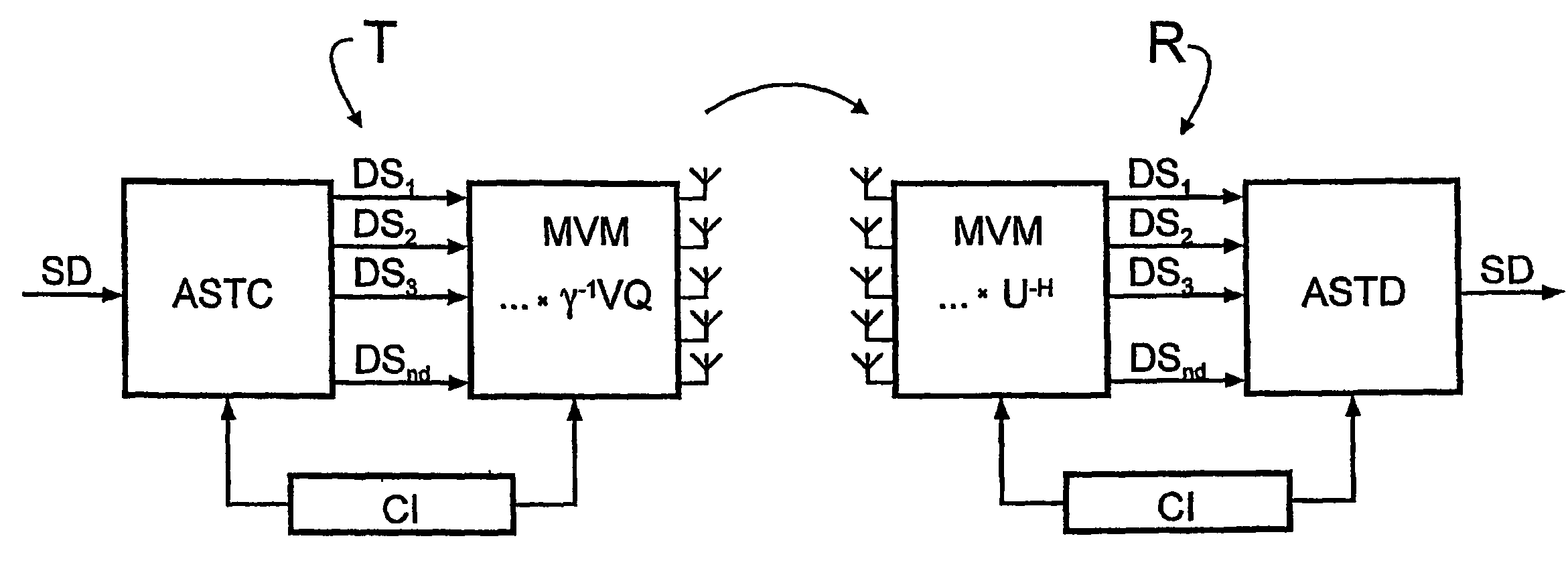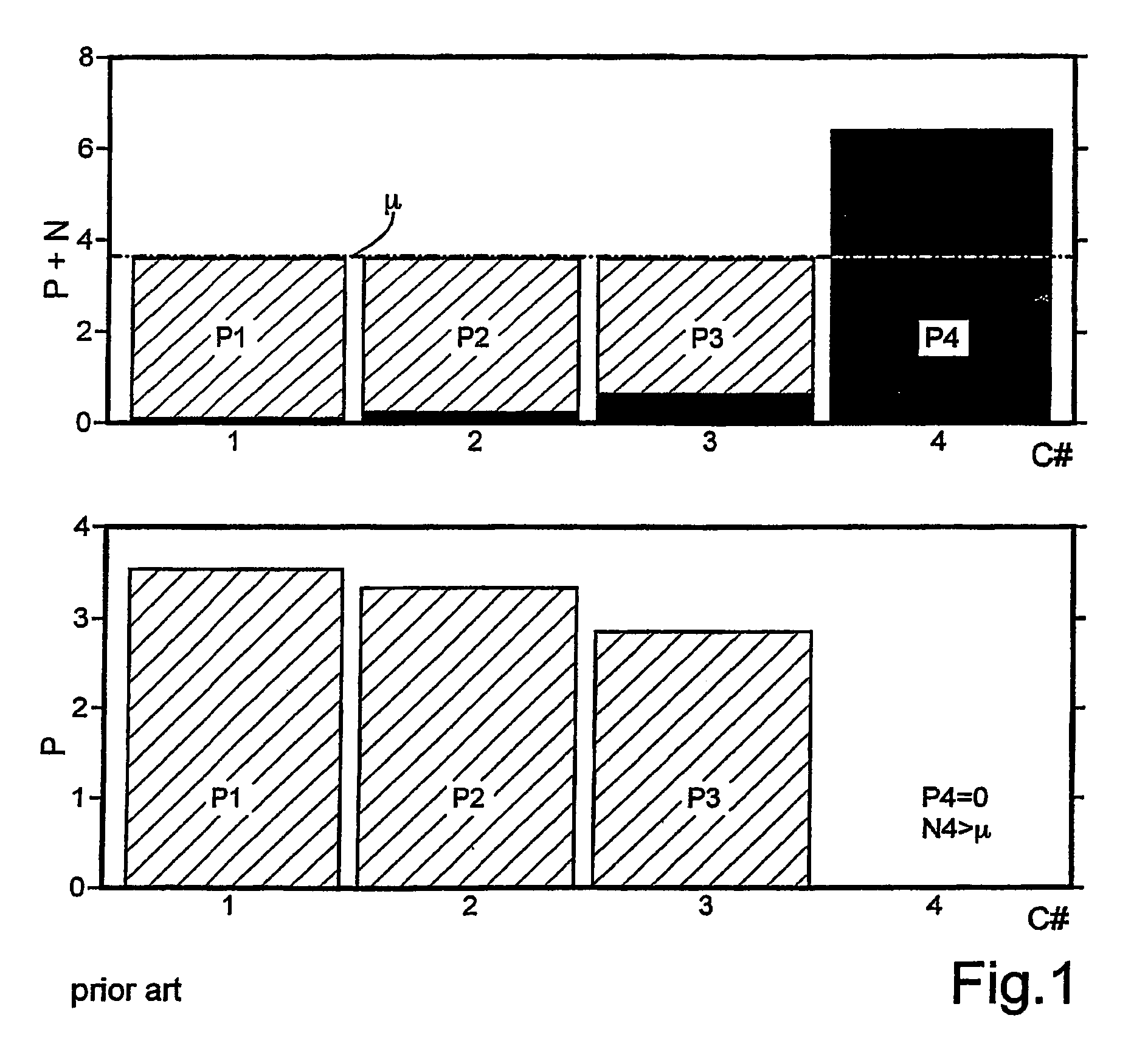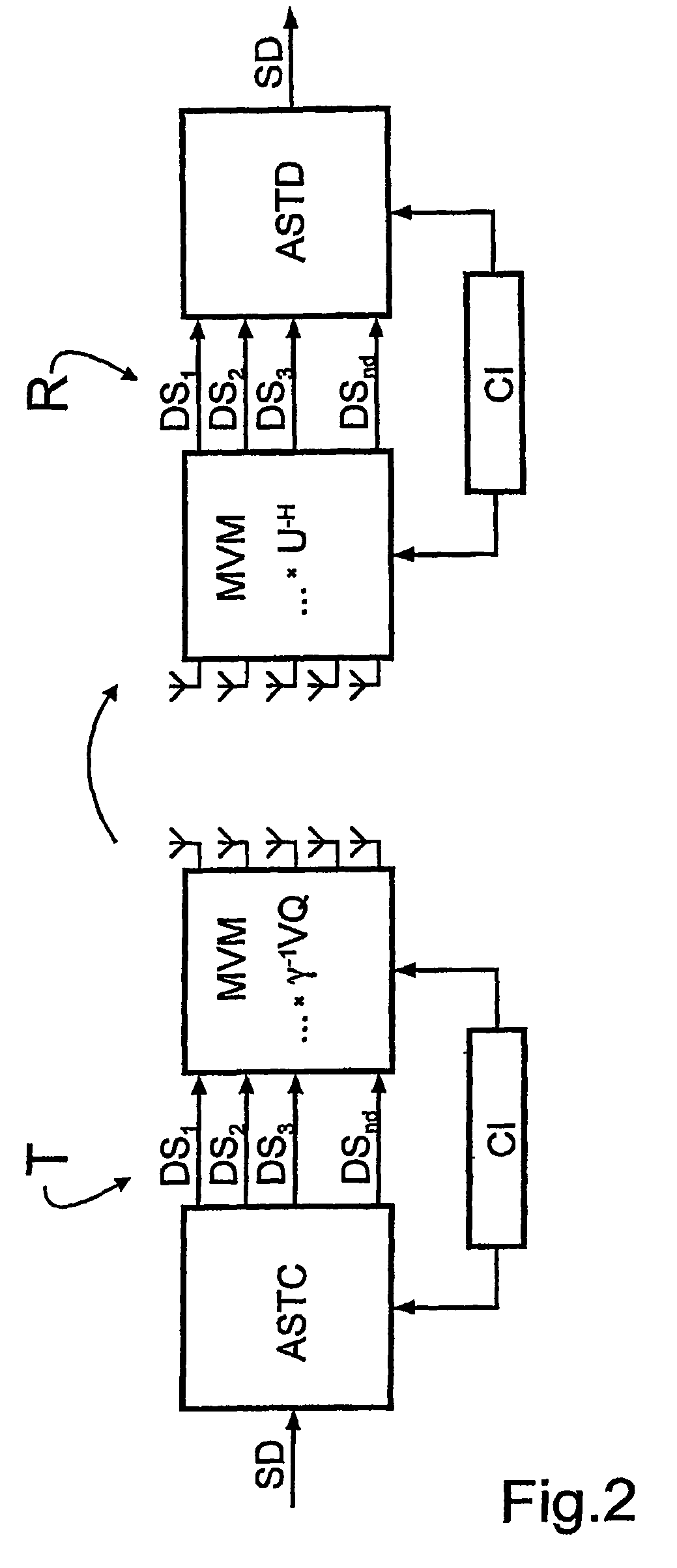MIMO signal processing method involving a rank-adaptive matching of the transmission rate
a signal processing and rank-adaptive matching technology, applied in multiplex communication, power management, wireless commuication services, etc., to achieve the effect of low complexity
- Summary
- Abstract
- Description
- Claims
- Application Information
AI Technical Summary
Benefits of technology
Problems solved by technology
Method used
Image
Examples
Embodiment Construction
[0075]Reference will now be made in detail to the preferred embodiments of the present invention, examples of which are illustrated in the accompanying drawings, wherein like reference numerals refer to like elements throughout.
[0076]FIG. 1 from the related art shows the power distribution according to the water-filling principle in a random Rayleigh channel with four transmitters and four receivers (nT=nR=4). The top diagram m shows the total formed by the transmit power P (hatched) and 3 N (black), which must be equal to a constant, referred to as the “fill level”μ, for the supported subchannels C# (1 . . . 4). The designation “water filling” is also derived from this constant. The fill level μ is dependent on the maximum transmit power available. The resulting power distribution is shown in the lower diagram. The fourth subchannel cannot be supported and consequently is switched off. From the viewpoint of the total capacity it is more favorable to distribute the available power t...
PUM
 Login to View More
Login to View More Abstract
Description
Claims
Application Information
 Login to View More
Login to View More - R&D
- Intellectual Property
- Life Sciences
- Materials
- Tech Scout
- Unparalleled Data Quality
- Higher Quality Content
- 60% Fewer Hallucinations
Browse by: Latest US Patents, China's latest patents, Technical Efficacy Thesaurus, Application Domain, Technology Topic, Popular Technical Reports.
© 2025 PatSnap. All rights reserved.Legal|Privacy policy|Modern Slavery Act Transparency Statement|Sitemap|About US| Contact US: help@patsnap.com



